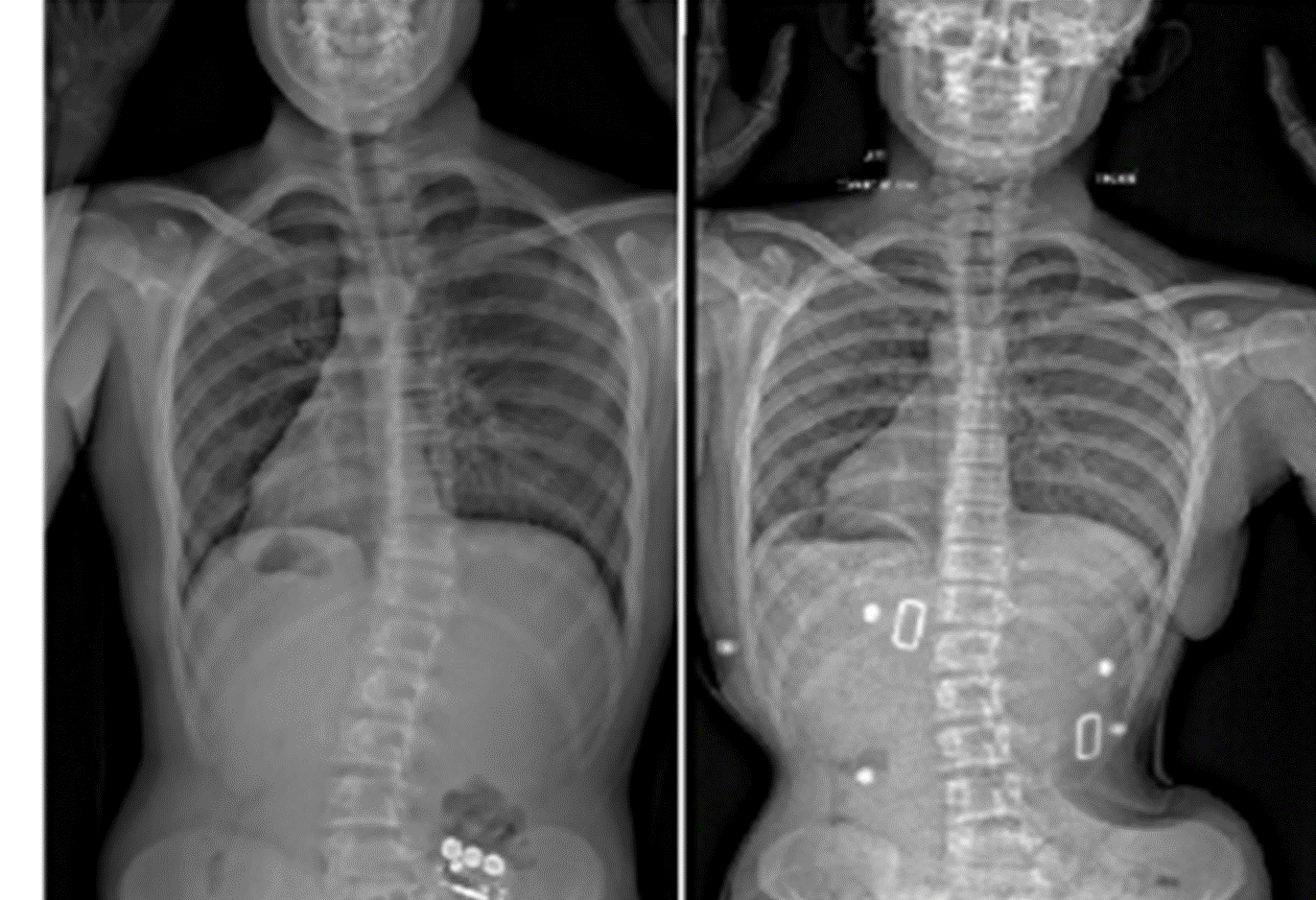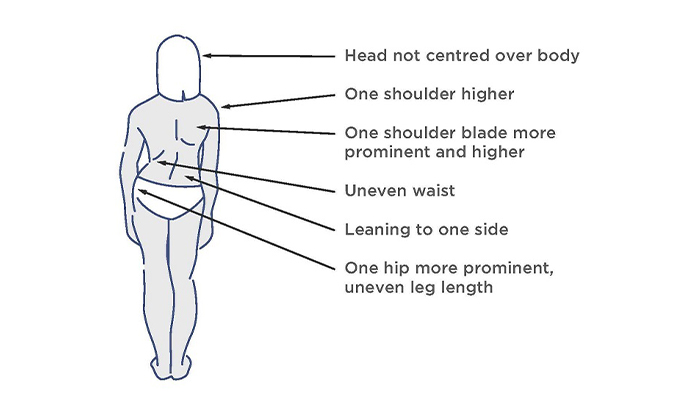
29 April 2022
Alex who is thirteen years old was originally referred to LOC from Parkside Hospital last summer. At that time his x-ray indicated a slight curve in the spine, however as the Cobb angle was measured at <10 degrees, no treatment was recommended. However, more recent frontal imaging confirmed a generalised thoracic lumbar curvature convex to the right, with a cobb angle of 22 degrees. Alex’s specialist was concerned about the speed of progression as this indicated that surgery might be necessary if his scoliosis was left untreated. Alex was referred to LOC for asymmetric bracing with our bespoke LOC Scoliosis Brace.
Alex has been in full time bracing, managing around 22 hours a day, due to the comfort of the brace. This has been combined with daily Scoliogold exercises provided by Scoliosis SOS, our partner in providing non-surgical treatment for scoliosis. After just 6 weeks of bracing, in-brace data collection shows skeletal overcorrection to -5 degrees. One complicating factor is that Alex also has type 1 diabetes: LOC had to modify the design of his brace considerably to accommodate his insulin pump, designing a truly bespoke scoliosis brace for him.
Alex will continue with treatment until his risk of progression (calculated according to the formula by Lonstein and Carlson equation) allows us to wean him out of bracing.
Especially in young people, spotting the early signs of scoliosis is important – as is seeking early treatment. These are the warning signs to look out for:

Visual signs of Scoliosis
You can find out more about the visual signs of scoliosis here.
If you think your child, adolescent or adult family member has scoliosis, you can contact LOC directly to arrange a consultation at one of our scoliosis clinics.
The operation used to treat severe scoliosis curves is typically spinal fusion surgery; a major procedure that involves moving muscles and realigning the skeleton into place. The curved, deformed vertebrae are fused together into a single bone, putting metal screws and rods into the spine to help straighten it. Surgery typically lasts between 4 and 8 hours depending on the severity of the curve. Bone graft is then taken from other parts of the body and used to cover the implants.
Following the operation, it is necessary to spend around a week in intensive care before returning home and the first few days are often uncomfortable. Most adolescents can expect to return to school from 2-4 weeks following surgery, but pain medication may be required up to 6 weeks following. A full recovery from the procedure can take up to a year, as it can take that long for the spine to heal fully.
Spinal fusion surgery causes the fused portion of the back to become permanently stiff, as a result, returning to sports that require large amounts of flexibility (ballet, yoga, gymnastics, dance) or contact (rugby, football, karate, hockey) may take longer.
Risks of spinal fusion surgery are like that of any other major procedure and include infection, blood clots and anaesthesia complications. The added risks include permanent nerve damage to the spine and paralysis.